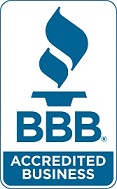LC 530
HEALTH & WELLNESS CONSULTING II
AIHCP BLOG: Please visit our interactive web blog. Here you will find frequently added information on our programs, articles and news by practice speciality, and much more. Register and become a part of our professional health care community.
COURSE INFORMATION
This intermediate course is the follow-up to Health & Wellness Consulting I and expands into additional topics in Preventative Medicine including Healthy Relationships, Human Sexuality, Healthy Pregnancies, Infectious Disease, and Preventing Lifestyle Diseases such as Cancer and Cardiovascular Disease. Course Code: LC 530. Contact hours of education = 40.
BOARD APPROVALS: The American Institute of Health Care Professionals (The Provider) is approved by the California Board of Registered Nurses, Provider number # CEP 15595 for 40 Contact Hours. Access information
Course Refund & AIHCP Policies: access here
Pre-requisite: You must be a Certified Health Care Life Coach with the American Institute of Health Care Professionals, Inc. to take this course.
This course is particularly designed for professionals seeking to meet education requirements for certification in the Sub-Specialty program in Health and Wellness Consulting in the Health Care Life Coach Certification Program by the American Institute of Health Care Professionals, Inc,.
Instructor/Course Author: Matthew Sobel
Link to Resume
E-mail: masobel@yahoo.com
TIME FRAME: You are allotted two years from the date of enrollment, to complete all of the courses in the Health and Wellness Consulting sub-specialty program. There are no set time-frames, other than the two year allotted time. If you do not complete the courses within the two-year time-frame, you will be removed from the course and an "incomplete" will be recorded for you in our records. Also, if you would like to complete the courses after this two-year expiration time, you would need to register and pay the course tuition fee again.
TEXTBOOKS: There is one (1) textbooks for the course:
Health & Wellness Eleventh Edition. Gordon Edlin, Eric Golanty. Jones & Bartlett Learning. Copyright 2014. ISBN: 978-1-4496-8710-6
Link to Purchase on Amazon.com: click here
Reading/Study Assignment: This course covers chapters 8-15 in the required textbook.
GRADING: You must achieve a passing score of at least 70% to complete this course and receive the 30 hours of awarded continuing education credit. There are no letter grades assigned. You will receive notice of your total % score. Those who score below the minimum of 70% will be contacted by the American College of Legal Nurse Consulting and options for completing additional course work to achieve a passing score, will be presented.
Online Classroom Resouces and Tools
* Examination Access: there is link to take you right to the online examination program where you can print out your examination and work with it. All examinations are formatted as "open book" tests. When you are ready, you can access the exam program at anytime and click in your responses to the questions. Full information is provided in the online classrooms.
* Student Resource Center: there is a link for access to a web page "Student Resource Center." The Resource Center provides for easy access to all of our policies/procedures and additional information regarding applying for certification. We also have many links to many outside reference sites, such as online libraries that you may freely access.
* Online Evaluation: there is a link in the classroom where you may access the course evaluation. All students completing a course, must, without exception, complete the course evaluation.
* Faculty Access Information: you will have access to your instructor's online resume/biography, as well as your instructor's specific contact information.
* Additional Learning Materials: some faculty have prepared additional "readings" and /or brief lecture notes to enhance your experience. All of these are available in the online classrooms.
COURSE OBJECTIVES: Upon completion of this course, you will be able to:
* List and define the major dimensions of human sexuality: physical, psychological, orientation, behavioral and relationship.
* List and describe the phases of the sexual response cycle.
* Describe the stages of development in intimate relationships.
* Identify and describe the essential components of good communication.
* Describe the major health habits in pregnancy.
* List the benefits of breastfeeding.
* Describe and list the advantages and disadvantages of combination and progestin-only hormonal contraceptives.
* Describe several fertility awareness methods of contraception.
* Identify factors affecting fertility-control decision making.
* Describe the impact of sexually transmitted diseases on society.
* List the risk factors for contracting a sexually transmitted disease.
* Identify several “safer sex” practices.
* Identify how infectious diseases are prevented and treated.
* Identify the etiology, symptoms, and treatments for cold and flu, Lyme disease, mononucleosis and ulcers.
* Describe how HIV caused AIDS and ways to prevent HIV/AIDS infections.
* Identify the most important ways to prevent cancer.
* Explain the differences between inherited and genetic diseases.
* Identify the kinds of environmental agents that cause cancer.
* Discuss the risk factors associated with breast cancer.
* Discuss the association between diet and cancer.
* Define cardiovascular disease, infarction, coronary heart disease, stroke and heart attack.
* Identify the major risk factors of heart disease that can not be changed and risk factors that can be changed.
* Discuss various ways to reduce cholesterol levels.
* Identify foods that help to maintain a healthy cardiovascular system.
* Describe several inherited diseases caused by chromosomal abnormalities.
* Identify several chemicals and drugs that cause birth defects.
* Explain the role of Prenatal Testing.
* Discuss how gene therapy and stem cells may be used to treat disease.
COURSE CONTENT
Chapter 8 Healthy Sexuality and Intimate Relationships.
Chapter 9 Understanding Pregnancy and Parenthood
Chapter 10 Choosing a Fertility Control Method
Chapter 11 Protecting Against Sexually Transmitted Diseases and AIDS
Chapter 12 Reducing Infections and building Immunity: Knowledge Encourages
Prevention.
Chapter 13. Cancer: Understanding Risks and Means of Prevention
Chapter 14 Cardiovascular Diseases: Understanding Risks and Measures of
Prevention.
Chapter 15 Heredity and Disease.

